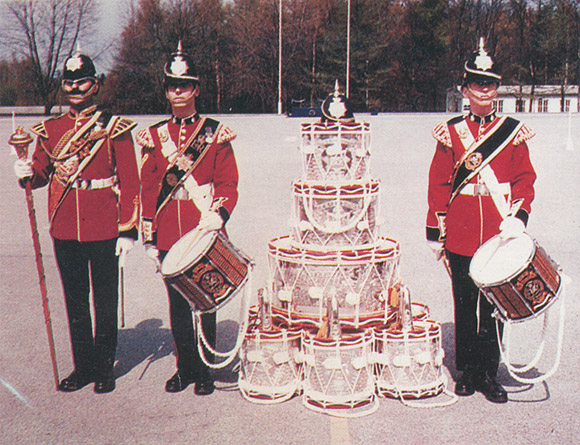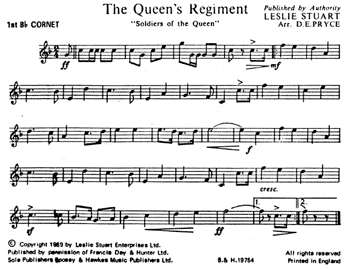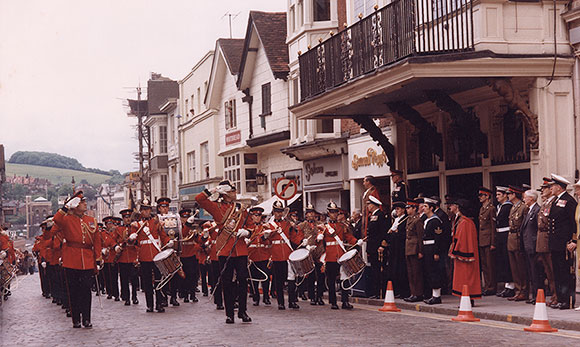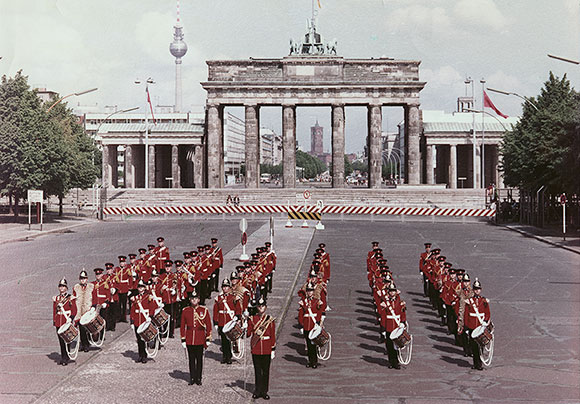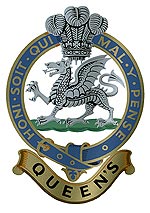 Band and Drums Music
Band and Drums Music
The Queen's Regiment 1966-1992
Further reductions and amalgamations brought about the formation of a new Large Regiment, The Queen's Regiment, which represented the counties of Surrey, Kent, Sussex and Middlesex formed on 31st December 1966. The Regiments amalgamated were:
The Queen's Royal Surrey Regiment
The Queen's Own Buffs (The Royal Kent Regiment)
The Royal Sussex Regiment
The Middlesex Regiment (Duke of Cambridge's Own)
Initially, each of the new four-battalions of the Regiment kept its direct county affiliations; for example, the 1st Battalion became 1st Battalion The Queen's Regiment (Queen's Surreys). The suffixes were dropped, however, in 1968, once it became known that the 4th Battalion was to be disbanded. Close ties were retained, though; the majority of the chattels (mainly pictures and Regimental Silver) within the 1st Battalion were Queen's Surreys related. For most of its short history The Queen's Regiment consisted of three regular battalions (1st, 2nd and 3rd) and two Territorial Army battalions (5th and 6/7th).
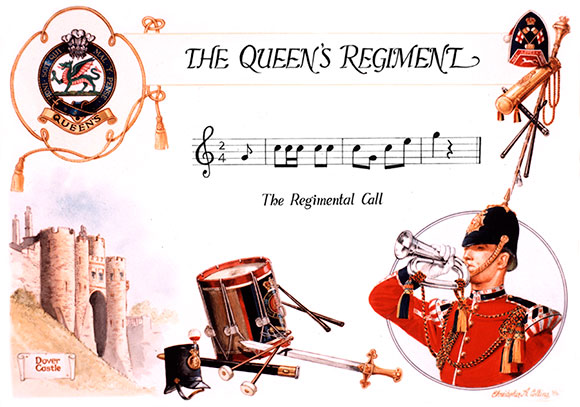
The Regimental Call
(Click to enlarge)
Quick March
'The Soldiers of the Queen' was the Regimental Quick March of The Queen's Regiment. It is an arrangement of the popular song 'Soldiers of The Queen' composed by Leslie Stuart in 1897. The song really came into its own two years later on the outbreak of the South African War.
'The Soldiers of the Queen'
Ypres Day 1976, 50th Anniversary of the Presentation of the Silver Drums to the 1st Bn The East Surrey Regiment. Photo taken on the parade ground,
1st Bn The Queen's Regiment, Albuhera Barracks Werl. Drum Major Colin Smith, Cpl Alan Warr.
(Click to enlarge)
The Soldiers of the Queen
(Click to enlarge)
Leslie Stuart was born in Southport in 1866. For fourteen years he was church organist at Salford and Manchester, and taught himself, MC composed a quantity of church music his fame rests on his theatre music (the musical comedy 'Florodora') popular songs (Lily of Laguna etc) musical training gave style, and a melodious quality to all of these songs which remain miniature classics of their kind. He died at Richmond, Surrey in 1928.
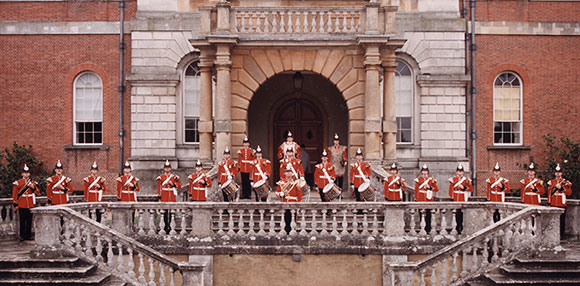
Corps of Drums, 1 Queen's, Clandon Park, Guildford.
(Click to enlarge)

Band and Drums 1st Bn The Queen's Royal Surrey Regiment, Oxford Barracks, Münster W. Germany.
Drum Major Eric Lockwood, Sgt Max Maloney, Cpl Smith, Drummers Jones and Levene.
(Click to enlarge)
The Diehards Steel Band, Berlin 1970. In 1969 it was announced that the 4th Bn The Queen's was to be disbanded. The 4th Battalion had in their Corps of Drums the 'Diehards' Steel Band who were posted to 1 Queen's Corps of Drums and moved with them to Berlin in 1970 where they played in concerts all over the city. Their 'mascot' was a parrot, taken on strength in Bn Part 1 orders as 2331355057 Drummer L Wellington. Whilst the Steel Band was playing he would screech and then look balefully at the audience! Included in this photo are, D/M Max Maloney, Sgt Chapman, Cpls Danny Sandeford, Warr, Smith and White, L/Cpls Havers, Cameron, Dmrs Scarfe, Winter, Mathews, Simpson, Finch, Brody and Hawley.
Related
